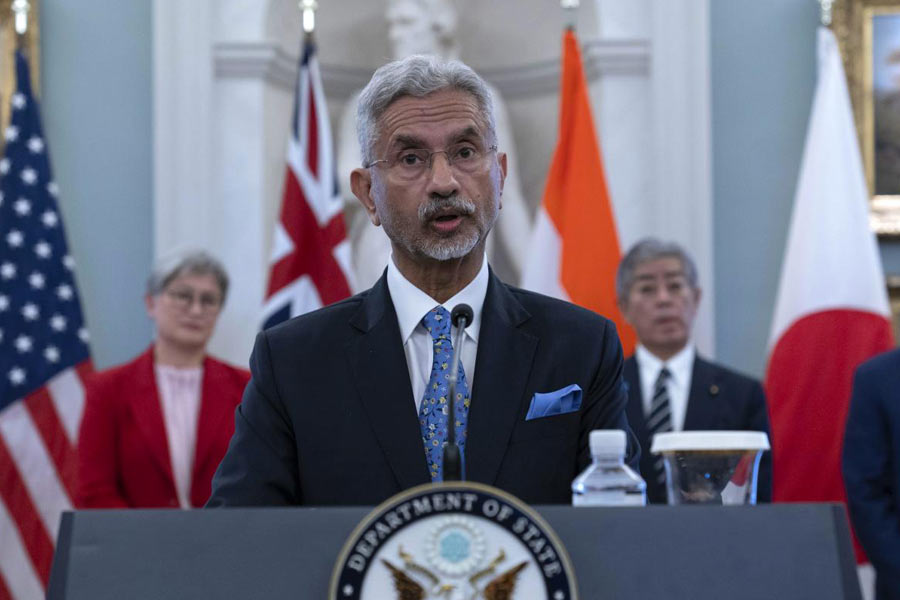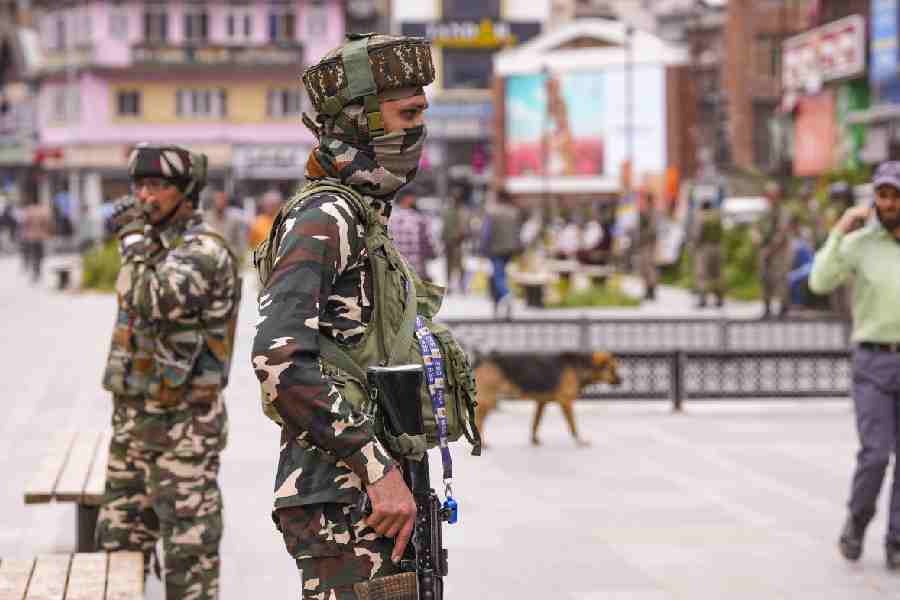 |
| The Eden tower after all but a few bulbs went off during the match on Thursday. Picture by Amit Datta |
Calcutta, Dec. 24: Half the stadium closed for renovation, the Eden Gardens had appeared in a different light today — till a familiar darkness returned when the floodlights went out.
At 5.58pm, with four balls of Sri Lanka’s innings left, one of the four floodlight towers went on the blink, reviving memories of the April 2008 blackout during an Indian Premier League match.
The lights returned after 26 minutes but by then the fiasco had underscored Bengal’s image of a state where nothing works and possibly imperilled the Eden’s future as an international venue at a time the ground is out of favour with Indian cricket authorities.
Police commissioner Gautam Mohan Chakrabarti said tonight that no matches under floodlights would be allowed at the Eden till the faults in the system had been corrected. Before the 2011 World Cup, the only night games scheduled at the ground as of now are next season’s IPL matches.
A pass-the-buck game was under way tonight with the reasons offered ranging from voltage fluctuation — implicating CESC — to poor tower maintenance, the Cricket Association of Bengal’s (CAB’s) responsibility.
“It’s a shame for cricket in Bengal. The stadium will host World Cup matches in another 15 months. Can’t we have a foolproof system?” asked Abhiroop Bhattacharya, a college student at the ground.
A foolproof system would require overhauling the four towers at the Eden — once the pride of the city and India’s first to install floodlights — at a cost of Rs 4-6 crore.
The metal halide lamps at the ground cannot withstand even a minor voltage fluctuation. Most stadiums in the world have shifted to advanced technology, like the Uninterrupted Power Supply (UPS) or fluctuation-resistant lights.
“We hope to switch to a better system before the World Cup,” said a CAB official.
Following the April 2008 embarrassment, a steering committee had been formed with representatives from the CAB, the public works department (PWD) and CESC. Its members tried to deflect blame from their own organisation.
“There was no disruption or disturbance in power supply. If there were a fluctuation or a trip, all four floodlights and the giant screen would have conked out,” a CESC spokesperson said.
Each of the four towers is fitted with 216 metal halide lamps, which draw power from CESC’s high-tension lines. Low-tension transmitters at the Eden bring the voltage down from 6,000 volts to 380-390 volts for the floodlights.
“It seems there was a momentary dip in the voltage at Tower No. 4,” said Sadhan Mukherjee, the CAB official in charge of the tower lights. Mukherjee said the voltage at Tower No. 4 — near E block at the high court end — fell from 390 volts to 370 volts. “We can prove this through records,” he said.
While the cricket association blamed CESC, the engineers of the PWD, responsible for overall maintenance, blamed poor maintenance of the towers, the CAB’s responsibility.
“It seems there was some problem with the maintenance of the towers,” said PWD minister Kshiti Goswami, who was at the ground.
As the lights went off, policemen came down to the boundary line to pre-empt crowd trouble. The spectators waited patiently for about 10 minutes before growing restive. Many queued up early for the lunch — or dinner — boxes on sale.
After India won, college student Atri Mitra left the ground happy but apprehensive. “If such power failures continue, the Eden will miss out on international matches,” Mitra said. “Why does this always have to happen at the Eden?” another fan asked.
Mamata Banerjee, who dropped in for 20 minutes during the match, sniffed a conspiracy. “This is probably an attempt to discredit cricket in Bengal,” she said and hinted at the state government’s failure to maintain the stadium.
CAB president Jagmohan Dalmiya declined to say if sabotage was a possibility. A seven-member probe committee, which includes the police commissioner, has been formed.










